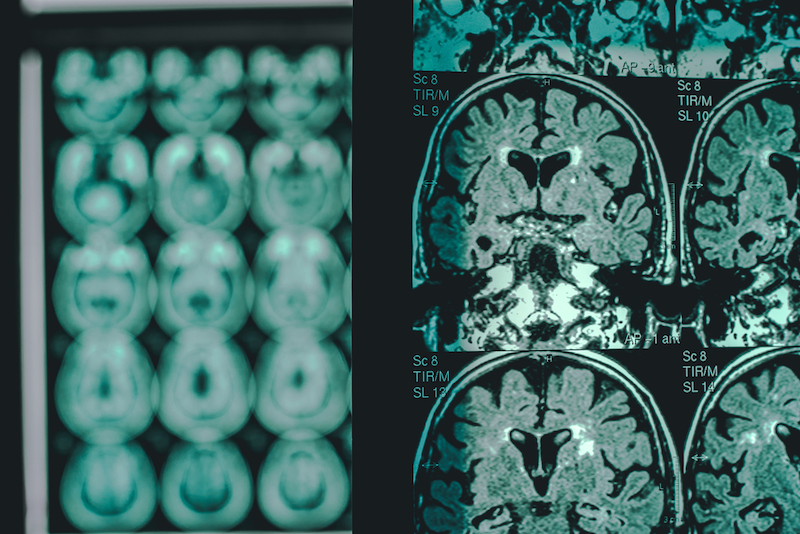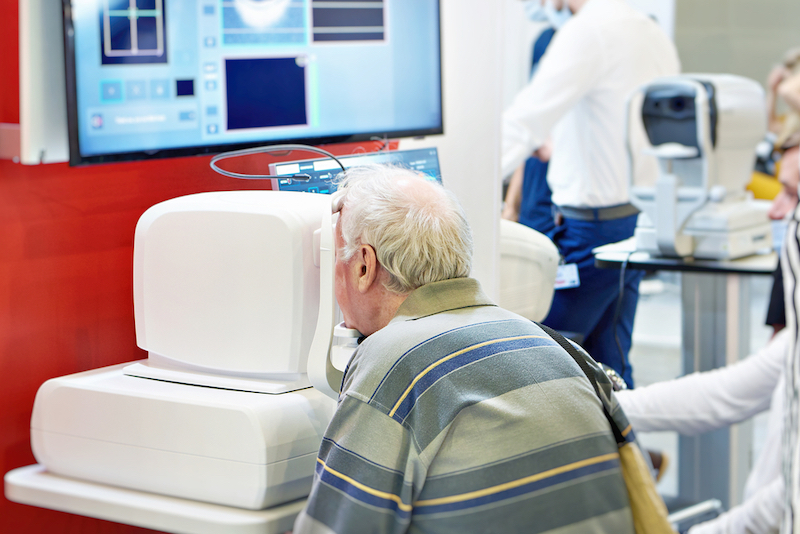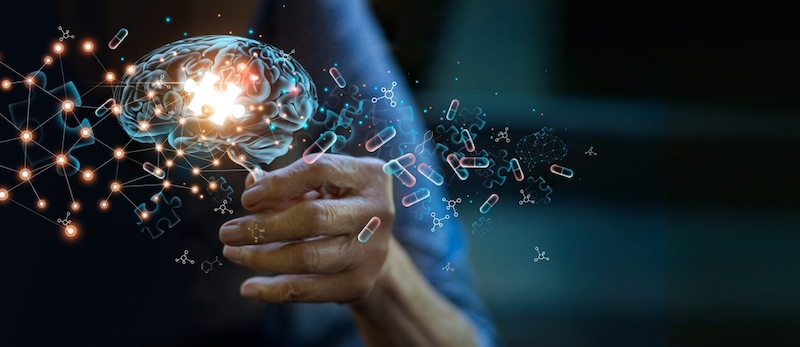Alzheimer’s disease gradually erodes cognitive abilities. Risk of the disease causes concern and uncertainty for many people. The World Health Organization estimates that more than 55 million people worldwide currently suffer with dementia. The number is expected to reach approximately 139 million by the year 2050. While there is currently no cure for Alzheimer’s, early detection remains crucial for enabling timely intervention, symptom management, and planning for the future.
Today, the diagnosis of Alzheimer’s uses a combination of clinical assessments, psychological testing, and brain imaging techniques. Imaging is focused on two proteins related to Alzheimer’s disease — amyloid beta and tau. Amyloid beta is a protein that forms toxic plaques in the brain, a sign of Alzheimer’s. Advanced imaging techniques, such as positron emission tomography (PET) and amyloid-sensitive magnetic resonance imaging (MRI), can detect amyloid deposits, providing a window into the brain’s health. The second protein is tau, which creates tangles within neurons and cell death. Measuring tau levels in cerebrospinal fluid (CSF), the fluid that surrounds the brain and spinal cord, can aid in early diagnosis and predict disease progression. A recent human trial reported that amyloid beta levels were indicative of Alzheimer’s disease 18 years before the individual was diagnosed.
Harnessing the power of biomarkers
Subtle but important changes in the brain occur long before the symptoms of Alzheimer’s are felt. These changes may be identified with biomarkers, which are measurements that capture what’s happening in a cell or organ at a certain point in time. An example is blood cholesterol as a biomarker for cardiovascular disease. Biomarkers provide valuable insights into the underlying condition, enabling early detection, intervention, and disease monitoring.
Amyloid beta and tau are the most commonly evaluated biomarkers. However, they’re not widely used because they require advanced imaging or CSF sampling which are expensive and/or invasive. Thus, it has been difficult to detect the disease early, when intervention and treatment could have the most significant impact. Fortunately, the field of Alzheimer’s research is constantly evolving, developing novel methods to identify the disease at its earliest stages. Evaluation techniques that are non-invasive and don’t require expensive equipment or expertise will have the greatest positive impact. Here’s a review of new approaches for early detection of Alzheimer’s disease.

Blood-based biomarkers offer a non-invasive approach
Researchers are now exploring the potential of blood-based biomarkers to detect Alzheimer’s disease in its early stages. Rapid advances in the development of ultra‐sensitive tests have led the way to measuring these biomarkers, including amyloid and tau proteins found in blood. In August 2023, Quest Diagnostics announced the availability of the first blood test for consumers that measures beta amyloid for the assessment of Alzheimer’s risk. However, by the end of 2023 the test was no longer available direct-to-consumers. While the technology is new, the promise of a simple blood test to diagnose Alzheimer’s disease is intriguing!
The eyes are a window to early detection of Alzheimer’s
Alzheimer’s disease has traditionally been considered a brain disease. However, more recent research has found that the effects of the disease are evident in the eyes, including the retina, cornea, and other structures. Researchers are investigating the potential of eye-related biomarkers to detect Alzheimer’s disease. Eye biomarkers have the potential to provide objective, affordable, and easily accessible diagnoses, but more work needs to be done. As this is a new area of research, results are inconclusive due to variability in the methods and the interpretation of findings across different studies. Scientists have made efforts to address these issues.

Using artificial intelligence to uncover Alzheimer’s patterns
Technology is revolutionizing the way we live — and how we approach healthcare. Artificial intelligence (AI) and machine learning are being used to greatly enhance our ability to detect signs of Alzheimer’s at an early stage. For example, AI computer tests of cognition for Alzheimer’s screening have better sensitivity and accuracy than standard behavioral tests. Machine learning can aid brain scan analysis to pick up on subtle patterns.
Odor detection as an early sign of Alzheimer’s
We often overlook our sense of smell compared to sight and hearing. Yet smell may play a surprising role in Alzheimer’s detection. One of the first areas of the brain to sustain damage in Alzheimer’s disease is the olfactory bulb, which sends signals from the nose to the brain. This results in the sense of smell being affected in those with Alzheimer’s before other symptoms are felt. Sudden declines in the sense of smell have been related to the onset of dementia. Thus, repeated olfactory testing to monitor changes in the sense of smell can serve as a biomarker of dementia and Alzheimer’s disease.
Biomarkers offer hope for early detection of Alzheimer’s disease
The early detection of Alzheimer’s disease remains a significant challenge. However, the emergence of new methods offers a glimmer of hope in the fight against this devastating disorder. These novel approaches, ranging from blood-based biomarkers to eye examinations, hold the potential to revolutionize Alzheimer’s diagnosis and improve the lives of millions affected by this disease.
There is much we can do to reduce the risk of dementia and Alzheimer’s disease through lifestyle modifications. The Parsemus Foundation is funding several studies to better understand the impact of testosterone, fish oil, and lithium on Alzheimer’s risk. To learn more, check out our page on Alzheimer’s Disease Prevention.



